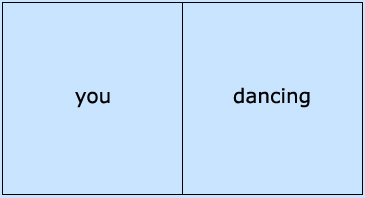What is drilling?
Drilling is a repetition by students of a model given by the teacher. Students can be drilled individually or in a group.
Why do we drill?
Drilling is necessary at all levels. We use drills to perfect pronunciation and intonation, or to practice new grammar and vocabulary. Drilling is a controlled practice activity, so it’s a good way to get students talking early in the lesson, before they are ready for freer speaking practice activities. It also allows the teacher to check and make corrections as necessary before errors become embedded.
Isn't that boring?
Not necessarily. You can find a lot of ways to make it more interesting and challenging for the students.
Drilling Techniques for the Classroom
While there is a place for straightforward, traditional drills in your lessons, they can become boring when used too often. Here are some more interesting drilling techniques for you to use.
Substitution Drills: These drills are useful for checking grammar points or sentence stress. Make a table or chart on the board (or in a handout). For example:
 |
T: What are you doing?
S: What are you doing?
T: We.
S: What are we doing?
T: The cat.
S: What is the cat doing?
This can also be done as pairwork, with one student supplying the words and the other producing the sentence.
Chaining: In a chain drill, the teacher (T) puts together a sentence one word at a time, and the students (s) repeat after every step.
T: What
S: What
T: What are
S: What are
T: What are you
S: What are you
T: What are you doing?
S: What are you doing?
You can also try back-chaining, a chain drill that starts from the end of the sentence.
T: doing?
S: doing?
T: you doing?
S: you doing?
T: are you doing?
…and so on.
Mill Drills: A mill drill is a freer practice activity. Students are given cards with a word or visual prompt on both sides. For example:
 |
The student holds the card so that other students can see the word “dancing.” The student circulates around the class producing the same question and receiving the same answer, and producing answers to other students' questions.
S1: What are you doing?
S2: I am dancing. What are the children doing?
S1: They are drawing.
Other Drilling Ideas
Competition: Students enjoy competition. Make a list of the more difficult words on the board and give a point to the group that has better pronunciation. Or do a fast-paced substitution drill and give a point to the team that produces a correct sentence first.
Creativity: When possible, elicit different words from the students to use in a substitution chart. Younger learners may enjoy creating their own cards for a mill drill, by drawing the visual prompt.
Don't Forget! : 1) Always give an example the first time you use a new drilling technique. 2) Mark stress, and remind your students to, too. 3) Use hand gestures to indicate intonation, word stress, or sentence stress. 4) Use natural, correct intonation.

